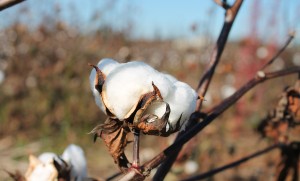Wednesday was Tax Day. For farmers, it was. Unlike the rest of us, farmers (and fishermen) file taxes on March 1. Due to the complexities of farming, including depreciation schedules for machinery, most farmers hire a professional tax preparer to help file their Schedule F. These are often independent accountants. And most are long-standing, often multi-generational relationships. Some local Farm Credit and Farm Bureau offices also offer the service. The business of farming is rife with fluidity. Even though they are harvested in the summer or fall, many grain crops are stored and sold throughout the year, as are livestock, so income can be generated any time of the year. There are several options farmers can use to “adjust” their income with expenses. They can elect to prepay fertilizer or other crop inputs in December or purchase equipment. So, farmers frequently consult with their tax person throughout the year for advice on managing income and expenses and how this can impact taxes.
North Carolina farmer and regenerative agriculture activist Russell Hendrick broke the national dryland corn yield record by harvesting 459 bu/A. Hendrick’s story is amazing. In just ten years, he has improved organic matter from 1.7% to 8.2% within the top six inches of the soil, and a whopping 6.5% from 6-12”. He described transforming his soil from high-iron clay to dark-chocolate black cake (love that metaphor!). This allows him to plant corn 3-3.5” deep. In addition to using cover crops and no-till, he is a big believer in biological products. He uses humic acid, fulvic acid, algae as a soil amendment and sugar as an in-furrow starter. In 2022 he was blessed with excellent growing conditions; he received rain every day or every other day from July 5 to black layer and the temps remained in the mid 80s. The health of his soil, and smart use of micronutrients and biologicals, made for an incredible nitrogen use efficiency story. He only applied 310 pounds of nitrogen to make 459 bushels of corn. That’s .67 lbs per bushel, well below the standard rule of 1-1.2 lbs. per bushel. My farm at Agricenter International in Memphis also had a solid nitrogen use efficiency story, using .78 pounds of N per bushel to produce 279 bu/a corn (in a season of record-setting heat and drought). The use of Huma Gro® micros, growth managers and biostimulants – with Micro Carbon Technology® – played a key role in this utilization.
Kiss the Ground is a documentary on regenerative agriculture airing on Netflix. The show is narrated by Woody Harrelson and features beautiful cinematography. I found it to be fascinating. Yes, it definitely supports a certain political agenda and is pretty one-sided. That said, it does make several excellent points and provides much to ponder. What they advocate are practices that can benefit farmers, humanity and nature. The soil can store nearly twice the amount of carbon than the entire atmosphere and all the world’s plants combined. And increasing carbon capture in the soil by just 0.4% annually would offset all carbon currently emitted. What’s also interesting is the show advocated for cattle production, in a planned grazing system. This assertion likely puts them at odds with many of their fellow climate activists, as they admit cattle are the most maligned animals on the planet. However, rotational grazing is a key component to regen ag and land restoration. The concept is to divide fields/ranges into animal-dense paddocks, allow cattle to graze on the grasses/vegetation so their hooves can aerate the soil and bury seeds as they fertilize the soil with their manure. The trick is to not allow the bovines to stay on any one paddock too long; you continually move them to the next paddock. The grazing will trigger stronger plant grow-back, greater biodiversity, better water filtration, and enrich the fertility and organic matter of the soil, all while sequestering carbon. In some cases, farmers then grow crops on these paddocks, so the cattle effectively become a crop in a rotational system. Or it’s a system to strengthen grazing lands. We utilized this system on our pasture back in Illinois, and now the farmers I rent to are growing wheat on various paddocks in the pasture as a rotational system. Guess all that fence building I did as a teenager has contributed to the regen ag movement!
Related Posts

2014 BHN World Conference
The Bio Huma Netics Inc. (BHN) 2014 World Conference will be held on the 11 – 14 of November, located at the DoubleTree Hotel in Gilbert, Arizona! This year’s theme is “Live the Life of Abundance”. The basic breakdown of the schedule is on Tuesday attendees will arrive and settle in with a welcome dinner. ...

This Week in Ag #34
Earl Butz, one of the most famous and popular US Secretaries of Agriculture, once told me that a key competitive advantage for US farmers in the global marketplace is our built-in natural infrastructure. Our Great Lakes and river system is perfectly designed to transport grain efficiently. The Mississippi River is the backbone of our agricultural transportation system: 60% of all grain exported from the USA is shipped by barge down the Mighty Mississippi.

Recycled Sewage: What Are We Putting on Our Farmland?
By Jael Batty Sewage sludge is a controversial input for farmers to use. Considering the toxins in today’s wastewater, are our treatments and regulations effective in eliminating micropollutants from sludge?

